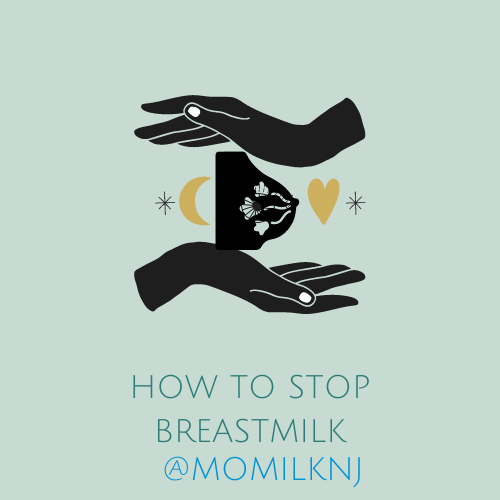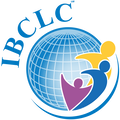WHAT TO EXPECT
WHO IS ON THE TEAMThe release must be part of a fully integrated plan of care by a team of qualified specialists including an IBCLC, a dentist or similar and a bodyworker specifically concerned with newborns. An IBCLC to supervise lactation and breastfeeding as well as provide oral exercises beyond wound care. A qualified, well trained pediatric specialist bodyworker who can address motor function, cranial and muscle tissue work for imbalances created by the tongue tie during development and any associated issues during the birth process. The dentist or other release provider must be willing to revise tongue, lip and/or buccal ties. They must teach wound care management that includes stretches and wound massage to that is frequent (every few hours for a few weeks) with a follow up visit. The release itself does not magically normalize the function of the tongue and mouth. WHEN AND HOW LONG?An initial and follow up appointment with the dentist or release provider. A PRE release appointment with a skilled bodyworker and then 2-3 follow up visits after the release. An initial intake appointment with an IBCLC and 2-3 follow up appointments to monitor progress and milk supply. Tongue Tie revisions or releases are part of a comprehensive, integrative approach to care for tethered oral tissue requiring a team approach over time (about 10 appointments total) to ensure successful feeding. TIMELINE OF CAREThe ideal would be to see an IBCLC to rule out any other issues related to nipple pain or low supply or a gassy baby.
THEN... If deemed necessary by the IBCLC see a skilled bodyworker to evaluate the form and function of the baby’s body. If deemed necessary by the IBCLC see a skilled qualified provider for a tongue tie diagnosis and release of the tethered oral tissue. Return to the bodyworker. Return to the IBCLC. Return to the release provider. Return to the bodyworker. Return to the IBCLC. Continue until all function is normalised and feeding is established. Aftercare at home is a CRITICAL part of the wound management. Tongue ties can readhere quickly because babies are always growing. In order to keep the wound open while it heals, you must hook your fingers in the floor of the baby’s mouth while stretching the tongue up and away to visualize a diamond shape in the wound. This must be done every 4 hours around the clock for at least a month to guarantee best results.
0 Comments
1. Pump or Feed first then Run
Empty your breasts before running so baby is satisfied while you are gone and so you aren't lugging around an extra 5-10lbs of weight on your chest. Leaving milk behind for a caretaker is paramount so you aren't getting called to come back part way through your run. 2. Lock those Breasts Down While you don't want to use too much compressions, you do want a well fitting bra and you likely will need a new size as your rib cage changes post birth as does your cup size. Don't be afraid to treat your breasts to a new bra for comfort and stability. 3. Eat for strength, stamina and endurance. 500 extra calories should do it and look for nutritious foods. 4. Stay hydrated. Many mother athletes I know like LMNT for hydration and electrolytes after an intense sweaty sessions. Drinking enough water everyday - aim for a gallon is a good place to start to stay hydrated. 5. Power Naps are your Friend 25 minutes of NSDR (Non Sleep Deep Rest) or even just a quick nap on the couch are going to make a world of difference to your energy levels. Making milk for another human never mind the soporific hormones that accompany that process and the night wakings can take their toll. Be a master at recovery methods. 6. Save the PRs and use running to Boost Mood This may not be the right time to train for a specific outcome as you have a lot of other competing energy requirements. Use running for fun, camaraderie, time away and general fitness. 7. Build Back Up Any runner knows that their fitness ebbs and flows. Entering running in the postpartum is not a strict return to running. You come back in a deconditioned state. Run walk is a great place to start as is getting an evaluation by a physical therapist. At a minimum try to pass the return to running parameters before you lace up. According to BirthFit, “Giving birth may be the most athletic event of your life. That's why I as a BirthFit professional I counsel women to train, recover, and nourish themselves as they begin to inhabit and love their new postpartum body. In the postpartum, tried and true recovery methods are the KEY to success One-on-One SupportWhether you are pregnant or postpartum, I am here to answer questions, guide and teach you skills and techniques to get the most out of this time of transition. Anything related to strength, conditioning, nutrition and breastfeeding is my absolute favorite topic and I am trained and ready to help you! I have some amazing resources to connect you to for fitness, pelvic floor therapy, yoga, Pose method running, and parent support groups. I am in touch with the best nutritionist, bodyworkers, osteopaths and acupuncturist so that you can enjoy a total wellness journey through your postpartum. Core Focused ExerciseWe move from the center. Our very being and our major organs are housed in the core. During pregnancy and the postpartum, this very center of you undergoes a major shift from growing a baby and a placenta to birthing. Our center of gravity changes and so does our posture. We can work on specific exercises to restore your core and get you feeling stable and ready to move. Using developmental movements and breath to get you sweating and moving and back into your body. In the Office or Online MeetingsCome in to see me and we can move together. Your posture will improve as will your sense of relaxation and control. If you can't make it to the office, you can book an online class.
Training for functional movement so that everyday movement is easier is great in the year post birth. Pushing strollers, lifting children and even rolling over in bed are all functional movements that can be trained during fitness practices. Fitness can help you feel back in your body and learn about it as well as offer an energetic outlet that pays you dividends over the longterm. Weight LossIf you are aiming to lose weight, remember that weight loss does not equal physical fitness strength training might put on pounds, but will yield a stronger, leaner, denser body it is recommended to keep weight loss at 1/2lb per week because fat stores toxins and we do not want those released in excess in the breastmilk. Calorie restriction is not recommended during breastfeeding. Keto and low carb are not recommended. If you need a focus, try the Mediterranean diet. Slow and Steady is the name of the game! I am happy to do this with your or you can hire a coach. I have a few that I recommend. Let me know. Get clear on why you are exercising and make a plan. Sweaty Boobs + Tasty MilkIf you are sweaty, baby might reject the breast ... you can shower before you feed or use pacifier wipes to clean off the breast. Better yet feed baby before you train so that the breasts are as empty and light as possible before your fitness practice. Your worth being tied to one metric of a scale weight is a myopic view. Try tracking your HRV, mood, energy level, resting heart rate and happiness to see where you are making progress. Moderation is GOODModerate exercise is good for you and your milk supply. If you are overtraining and under recovering, consider that your milk supply might be affected as well as your overall wellbeing. Slow and steady is the road to success! Avoid maximal effort and stick to exercise in the moderate zone. You can feed your baby before exercise, but if you do maximal exercise, lactic acid can build up 90 minutes post training. Some babies do not mind the taste and it has NO effect on nutrients in the breastmilk. If you have that last 5-10lbs you want to lose, but can't... many times it's the weight of the breast and the milk.
|
CONNECT WITH MEIN NETWORK WITH
|
|



